经典语义分割(一)利用pytorch复现全卷积神经网络FCN
这里选择B站up主[霹雳吧啦Wz]根据pytorch官方torchvision模块中实现的FCN源码。
Github连接:FCN源码
1 FCN模型搭建
1.1 FCN网络图
- pytorch官方实现的FCN网络图,如下所示。

1.2 backbone
- FCN原文中的backbone是VGG,这里pytorch官方采用了resnet作为FCN的backbone。
- ResNet的前两层跟GoogLeNet中的⼀样:
- 在输出通道数为64、步幅为2的7 × 7卷积层后,接步幅为2的3 × 3的最大汇聚层。
- 不同之处在于ResNet每个卷积层后增加了批量规范化层。
- GoogLeNet在后面接了4个由Inception块组成的模块。ResNet后接4个由残差块。
- ResNet则使用4个由残差块组成的模块,每个模块使用若干个同样输出通道数的残差块。
- 第1个模块(layer1)由于之前已经使用了步幅为2的最大汇聚层,所以无须减小高和宽。
- 原生的ResNet在之后的每个模块(layer2、layer3、layer4)在第⼀个残差块里将上一个模块的通道数翻倍,并将高和宽减半。
- 不过,在这里和原生的ResNet不同的是,layer3和layer4使用了空洞卷积,并且高宽不减半。
- ResNet的前两层跟GoogLeNet中的⼀样:
# /fcn/src/backbone.py
import torch
import torch.nn as nn
from torchinfo import summary
def conv3x3(in_planes, out_planes, stride=1, groups=1, dilation=1):
"""3x3 convolution with padding"""
return nn.Conv2d(in_planes, out_planes, kernel_size=3, stride=stride,
padding=dilation, groups=groups, bias=False, dilation=dilation)
def conv1x1(in_planes, out_planes, stride=1):
"""1x1 convolution"""
return nn.Conv2d(in_planes, out_planes, kernel_size=1, stride=stride, bias=False)
class Bottleneck(nn.Module):
# Bottleneck in torchvision places the stride for downsampling at 3x3 convolution(self.conv2)
# while original implementation places the stride at the first 1x1 convolution(self.conv1)
# according to "Deep residual learning for image recognition"https://arxiv.org/abs/1512.03385.
# This variant is also known as ResNet V1.5 and improves accuracy according to
# https://ngc.nvidia.com/catalog/model-scripts/nvidia:resnet_50_v1_5_for_pytorch.
expansion = 4
def __init__(self, inplanes, planes, stride=1, downsample=None, groups=1,
base_width=64, dilation=1, norm_layer=None):
super(Bottleneck, self).__init__()
if norm_layer is None:
norm_layer = nn.BatchNorm2d
width = int(planes * (base_width / 64.)) * groups
# Both self.conv2 and self.downsample layers downsample the input when stride != 1
self.conv1 = conv1x1(inplanes, width)
self.bn1 = norm_layer(width)
self.conv2 = conv3x3(width, width, stride, groups, dilation)
self.bn2 = norm_layer(width)
self.conv3 = conv1x1(width, planes * self.expansion)
self.bn3 = norm_layer(planes * self.expansion)
self.relu = nn.ReLU(inplace=True)
self.downsample = downsample
self.stride = stride
def forward(self, x):
identity = x
out = self.conv1(x)
out = self.bn1(out)
out = self.relu(out)
out = self.conv2(out)
out = self.bn2(out)
out = self.relu(out)
out = self.conv3(out)
out = self.bn3(out)
if self.downsample is not None:
identity = self.downsample(x)
out += identity
out = self.relu(out)
return out
class ResNet(nn.Module):
def __init__(self, block, layers, num_classes=1000, zero_init_residual=False,
groups=1, width_per_group=64, replace_stride_with_dilation=None,
norm_layer=None):
super(ResNet, self).__init__()
if norm_layer is None:
norm_layer = nn.BatchNorm2d
self._norm_layer = norm_layer
self.inplanes = 64
self.dilation = 1
if replace_stride_with_dilation is None:
# each element in the tuple indicates if we should replace
# the 2x2 stride with a dilated convolution instead
replace_stride_with_dilation = [False, False, False]
if len(replace_stride_with_dilation) != 3:
raise ValueError("replace_stride_with_dilation should be None "
"or a 3-element tuple, got {}".format(replace_stride_with_dilation))
self.groups = groups
self.base_width = width_per_group
'''
1、ResNet的前两层
ResNet的前两层跟GoogLeNet中的⼀样:
在输出通道数为64、步幅为2的7 × 7卷积层后,接步幅为2的3 × 3的最⼤汇聚层。
不同之处在于ResNet每个卷积层后增加了批量规范化层。
'''
self.conv1 = nn.Conv2d(in_channels=3, out_channels=self.inplanes, kernel_size=7, stride=2, padding=3,bias=False)
self.bn1 = norm_layer(self.inplanes)
self.relu = nn.ReLU(inplace=True)
self.maxpool = nn.MaxPool2d(kernel_size=3, stride=2, padding=1)
'''
2、ResNet后接4个由残差块
GoogLeNet在后⾯接了4个由Inception块组成的模块。
ResNet则使⽤4个由残差块组成的模块,每个模块使⽤若⼲个同样输出通道数的残差块。
第⼀个模块(layer1)由于之前已经使⽤了步幅为2的最⼤汇聚层,所以⽆须减⼩⾼和宽。
之后的每个模块(layer2、layer3、layer4)在第⼀个残差块⾥将上⼀个模块的通道数翻倍,并将⾼和宽减半。
不过,在这里和原生的ResNet不同的是,layer3和layer4使用了空洞卷积,并且高宽不减半。
'''
self.layer1 = self._make_layer(block, 64, layers[0])
self.layer2 = self._make_layer(block, 128, layers[1], stride=2, dilate=replace_stride_with_dilation[0])
self.layer3 = self._make_layer(block, 256, layers[2], stride=2, dilate=replace_stride_with_dilation[1])
self.layer4 = self._make_layer(block, 512, layers[3], stride=2, dilate=replace_stride_with_dilation[2])
self.avgpool = nn.AdaptiveAvgPool2d((1, 1))
self.fc = nn.Linear(512 * block.expansion, num_classes)
for m in self.modules():
if isinstance(m, nn.Conv2d):
nn.init.kaiming_normal_(m.weight, mode='fan_out', nonlinearity='relu')
elif isinstance(m, nn.BatchNorm2d):
nn.init.constant_(m.weight, 1)
nn.init.constant_(m.bias, 0)
# Zero-initialize the last BN in each residual branch,
# so that the residual branch starts with zeros, and each residual block behaves like an identity.
# This improves the model by 0.2~0.3% according to https://arxiv.org/abs/1706.02677
if zero_init_residual:
for m in self.modules():
if isinstance(m, Bottleneck):
nn.init.constant_(m.bn3.weight, 0)
def _make_layer(self, block, planes, blocks, stride=1, dilate=False):
norm_layer = self._norm_layer
downsample = None
previous_dilation = self.dilation
if dilate:
# layer3和layer4使用了空洞卷积,高宽不减半,因此设置stride = 1
self.dilation *= stride
stride = 1
# layer2、layer3和layer4的stride=2,满足
# layer1的stride=1,但是inplanes(64) != planes * block.expansion(64×4),因此也满足
if stride != 1 or self.inplanes != planes * block.expansion:
downsample = nn.Sequential(
conv1x1(self.inplanes, planes * block.expansion, stride),
norm_layer(planes * block.expansion),
)
# 对于每个layer,只有第1个Bottleneck需要downsample
layers = []
layers.append(block(self.inplanes, planes, stride, downsample, self.groups,
self.base_width, previous_dilation, norm_layer))
self.inplanes = planes * block.expansion
# 对于每个layer,从第2个Bottleneck开始,就不需要downsample
for _ in range(1, blocks):
layers.append(block(self.inplanes, planes, groups=self.groups,
base_width=self.base_width, dilation=self.dilation,
norm_layer=norm_layer))
return nn.Sequential(*layers)
def _forward_impl(self, x):
# See note [TorchScript super()]
x = self.conv1(x)
x = self.bn1(x)
x = self.relu(x)
x = self.maxpool(x)
x = self.layer1(x)
x = self.layer2(x)
x = self.layer3(x)
x = self.layer4(x)
x = self.avgpool(x)
x = torch.flatten(x, 1)
x = self.fc(x)
return x
def forward(self, x):
return self._forward_impl(x)
def _resnet(block, layers, **kwargs):
model = ResNet(block, layers, **kwargs)
return model
def resnet50(**kwargs):
r"""ResNet-50 model from
`"Deep Residual Learning for Image Recognition" <https://arxiv.org/pdf/1512.03385.pdf>`_
Args:
pretrained (bool): If True, returns a model pre-trained on ImageNet
progress (bool): If True, displays a progress bar of the download to stderr
"""
return _resnet(Bottleneck, [3, 4, 6, 3], **kwargs)
def resnet101(**kwargs):
r"""ResNet-101 model from
`"Deep Residual Learning for Image Recognition" <https://arxiv.org/pdf/1512.03385.pdf>`_
Args:
pretrained (bool): If True, returns a model pre-trained on ImageNet
progress (bool): If True, displays a progress bar of the download to stderr
"""
return _resnet(Bottleneck, [3, 4, 23, 3], **kwargs)
if __name__ == '__main__':
net = resnet50(replace_stride_with_dilation=[False, True, True])
print(net)
# pip install torchinfo
# 可以看到网络每一层的输出shape以及网络参数信息
summary(net, input_size=(1, 3, 480, 480))
1.3 FCN Head
- 经过backbone后,再通过FCN Head模块。
- 通过3×3卷积层缩小通道为原来的1/4【2048-512】,再通过一个dropout和一个1×1卷积层
- 这里1×1卷积层调整特征层的channel为分割类别中的类别个数。
- layer3中引出的一条FCN Head辅助分类器,是为了防止误差梯度无法传递到网络浅层。
- 训练的时候是可以使用辅助分类器件的。
- 最后去预测或者部署到正式环境的时候只用主干的output,不用aux output。
- 最后经过双线性插值还原特征图大小到原图。
# /fcn/src/fcn_model.py
from collections import OrderedDict
from typing import Dict
import torch
from torch import nn, Tensor
from torch.nn import functional as F
try:
from .backbone import resnet50, resnet101
except:
from backbone import resnet50, resnet101
class IntermediateLayerGetter(nn.ModuleDict):
_version = 2
__annotations__ = {
"return_layers": Dict[str, str],
}
def __init__(self, model: nn.Module, return_layers: Dict[str, str]) -> None:
if not set(return_layers).issubset([name for name, _ in model.named_children()]):
raise ValueError("return_layers are not present in model")
orig_return_layers = return_layers
return_layers = {str(k): str(v) for k, v in return_layers.items()}
# 重新构建backbone,将没有使用到的模块全部删掉
layers = OrderedDict()
for name, module in model.named_children():
layers[name] = module
if name in return_layers:
del return_layers[name]
if not return_layers:
break
super(IntermediateLayerGetter, self).__init__(layers)
self.return_layers = orig_return_layers
def forward(self, x: Tensor) -> Dict[str, Tensor]:
out = OrderedDict()
for name, module in self.items():
x = module(x)
# self.return_layers = {'layer4': 'out', 'layer3': 'aux'}
if name in self.return_layers:
out_name = self.return_layers[name]
out[out_name] = x
return out
class FCN(nn.Module):
__constants__ = ['aux_classifier']
def __init__(self, backbone, classifier, aux_classifier=None):
super(FCN, self).__init__()
self.backbone = backbone
self.classifier = classifier
self.aux_classifier = aux_classifier
def forward(self, x: Tensor) -> Dict[str, Tensor]:
input_shape = x.shape[-2:]
# contract: features is a dict of tensors
features = self.backbone(x)
result = OrderedDict()
x = features["out"]
x = self.classifier(x)
# 原论文中虽然使用的是ConvTranspose2d,但权重是冻结的,所以就是一个bilinear插值
x = F.interpolate(x, size=input_shape, mode='bilinear', align_corners=False)
result["out"] = x
# FCN Head辅助分类器,是为了防止误差梯度无法传递到网络浅层
if self.aux_classifier is not None:
x = features["aux"]
x = self.aux_classifier(x)
# 原论文中虽然使用的是ConvTranspose2d,但权重是冻结的,所以就是一个bilinear插值
x = F.interpolate(x, size=input_shape, mode='bilinear', align_corners=False)
result["aux"] = x
return result
class FCNHead(nn.Sequential):
def __init__(self, in_channels, channels):
# 通过3×3卷积层缩小通道为原来的1/4【2048-512】,再通过一个dropout和一个1×1卷积层
inter_channels = in_channels // 4
layers = [
nn.Conv2d(in_channels, inter_channels, 3, padding=1, bias=False),
nn.BatchNorm2d(inter_channels),
nn.ReLU(),
nn.Dropout(0.1),
nn.Conv2d(inter_channels, channels, 1) # 这里1×1卷积层调整特征层的channel为分割类别中的类别个数
]
super(FCNHead, self).__init__(*layers)
def fcn_resnet50(aux, num_classes=21, pretrain_backbone=False):
# 'resnet50_imagenet': 'https://download.pytorch.org/models/resnet50-0676ba61.pth'
# 'fcn_resnet50_coco': 'https://download.pytorch.org/models/fcn_resnet50_coco-1167a1af.pth'
backbone = resnet50(replace_stride_with_dilation=[False, True, True])
if pretrain_backbone:
# 载入resnet50 backbone预训练权重
backbone.load_state_dict(torch.load("resnet50.pth", map_location='cpu'))
out_inplanes = 2048
aux_inplanes = 1024
return_layers = {'layer4': 'out'}
if aux:
return_layers['layer3'] = 'aux'
# backbone经过前向传播的结果为OrderedDict()
backbone = IntermediateLayerGetter(backbone, return_layers=return_layers)
aux_classifier = None
# why using aux: https://github.com/pytorch/vision/issues/4292
if aux:
aux_classifier = FCNHead(aux_inplanes, num_classes)
classifier = FCNHead(out_inplanes, num_classes)
model = FCN(backbone, classifier, aux_classifier)
return model
def fcn_resnet101(aux, num_classes=21, pretrain_backbone=False):
# 'resnet101_imagenet': 'https://download.pytorch.org/models/resnet101-63fe2227.pth'
# 'fcn_resnet101_coco': 'https://download.pytorch.org/models/fcn_resnet101_coco-7ecb50ca.pth'
backbone = resnet101(replace_stride_with_dilation=[False, True, True])
if pretrain_backbone:
# 载入resnet101 backbone预训练权重
backbone.load_state_dict(torch.load("resnet101.pth", map_location='cpu'))
out_inplanes = 2048
aux_inplanes = 1024
return_layers = {'layer4': 'out'}
if aux:
return_layers['layer3'] = 'aux'
backbone = IntermediateLayerGetter(backbone, return_layers=return_layers)
aux_classifier = None
# why using aux: https://github.com/pytorch/vision/issues/4292
if aux:
aux_classifier = FCNHead(aux_inplanes, num_classes)
classifier = FCNHead(out_inplanes, num_classes)
model = FCN(backbone, classifier, aux_classifier)
return model
if __name__ == '__main__':
model = fcn_resnet50(aux=True, num_classes=21)
print(model)
x = torch.randn(size=(1, 3, 480, 480))
print(model(x)['out'].shape)
print(model(x)['aux'].shape)
2 损失函数的计算
2.1 VOC的标注详解

-
这张图片大致可以分为四部分,一部分是黑色背景,一部分是粉红色的人,一部分是大红色的飞机,还有一部分是白色的神秘物体。
-
图片的背景,它是黑色的,背景类别为0,因此在调色板中0所对应的RGB值为[0,0,0],为黑色。
-
pascal_voc_classes.json中
"person": 15,可知人用数字15表示,而在palette.json中,"15": [192, 128, 128]可知15对应的RGB为粉红色,因此粉红色的是人。 -
同理,可知飞机
"aeroplane": 1在调色板中对应的颜色为大红色。 -
这个白色的神秘物体其实也是一个小飞机,但很难分辨,故标注时用白色像素给隐藏起来了,最后白色对应的像素也不会参与损失计算。如果你足够细心的话,你会发现在人和飞机的边缘其实都是存在一圈白色的像素的,这是为了更好的区分不同类别对应的像素。同样,这里的白色也不会参与损失计算。
-
-
我们可以用程序来看看标注图像中是否有白色像素。
from PIL import Image import numpy as np img = Image.open('D:\\VOCdevkit\\VOC2007\\SegmentationClass\\2007_000032.png') img_np = np.array(img)
- 可以看到地下的像素是1,表示飞机(大红色),上面的像素为0,表示背景(黑色),中间的像素为255,这就对应着飞机周围的白色像素。
- 我们可以看一下255对应的RGB值, [224,224,192]表示的RGB颜色为白色。
- 这里的255需要注意,后面计算损失时白色部分不计算正是通过忽略这个值实现的。
2.2 交叉熵损失cross_entropy
l o s s ( x , c l a s s ) = − l o g ( e x [ c l a s s ] ∑ j e x [ j ] ) = − x [ c l a s s ] + l o g ( ∑ j e x [ j ] ) 举个例子:假设输入 x = [ 0.1 , 0.2 , 0.3 ] ,标签 c l a s s = 1 l o s s ( x , c l a s s ) = − x [ c l a s s ] + l o g ( ∑ j e x [ j ] ) = − 0.2 + l o g ( e x [ 0 ] + e x [ 1 ] + e x [ 2 ] ) = − 0.2 + l o g ( e 0.1 + e 0.2 + e 0.3 ) loss(x,class)=-log(\frac{e^{x[class]}}{\sum\limits_{j} e^{x[j]}})=-x[class]+log(\sum\limits_{j} e^{x[j]})\\ 举个例子:假设输入x=[0.1,0.2,0.3],标签class=1 \\ loss(x,class)=-x[class]+log(\sum\limits_{j} e^{x[j]})=-0.2 +log( e^{x[0]} + e^{x[1]} + e^{x[2]}) \\ = -0.2 +log( e^{0.1} + e^{0.2} + e^{0.3}) loss(x,class)=−log(j∑ex[j]ex[class])=−x[class]+log(j∑ex[j])举个例子:假设输入x=[0.1,0.2,0.3],标签class=1loss(x,class)=−x[class]+log(j∑ex[j])=−0.2+log(ex[0]+ex[1]+ex[2])=−0.2+log(e0.1+e0.2+e0.3)
我们可以用程序进行验证:
import torch
import numpy as np
import math
# 官方实现
input = torch.tensor([[0.1, 0.2, 0.3],
[0.1, 0.2, 0.3],
[0.1, 0.2, 0.3]])
target = torch.tensor([0, 1, 2])
loss = torch.nn.functional.cross_entropy(input, target)
print('官方计算 loss = ', loss.numpy())
# 自己计算
res0 = -0.1 + np.log(math.exp(0.1) + math.exp(0.2) + math.exp(0.3))
res1 = -0.2 + np.log(math.exp(0.1) + math.exp(0.2) + math.exp(0.3))
res2 = -0.3 + np.log(math.exp(0.1) + math.exp(0.2) + math.exp(0.3))
res = (res0 + res1 + res2) / 3
print('自己计算 loss = %.7f ' % res)
# 仅精度有差别,所以这证明了我们的计算方式是没有错的。
官方计算 loss = 1.1019429
自己计算 loss = 1.1019428
FCN在计算损失是会忽略白色的像素,其就对应着标签中的255。
忽略白色像素的损失其实很简单,只要在函数调用时传入ignore_index并指定对应的值即可。
如对本例来说,现我打算忽略target中标签为2的数据,即不让其参与损失计算,我们来看看如何使用cross_entropy函数来实现。
import torch
import numpy as np
import math
# 官方实现
input = torch.tensor([[0.1, 0.2, 0.3],
[0.1, 0.2, 0.3],
[0.1, 0.2, 0.3]])
target = torch.tensor([0, 1, 2])
loss = torch.nn.functional.cross_entropy(input, target, ignore_index=2)
print('官方计算 loss = ', loss.numpy())
# 自己计算
res0 = -0.1 + np.log(math.exp(0.1) + math.exp(0.2) + math.exp(0.3))
res1 = -0.2 + np.log(math.exp(0.1) + math.exp(0.2) + math.exp(0.3))
res = (res0 + res1 ) / 2
print('自己计算 loss = %.6f ' % res)
官方计算 loss = 1.151943
自己计算 loss = 1.151943
2.3 FCN中损失计算过程
-
程序中输入cross_entropy函数中的x通常是4维的tensor,即[N,C,H,W],这时候训练损失是怎么计算的呢?我们以x的维度为[1,2,2,2]为例讲解
-
我们手动计算时候,会将数据按通道方向展开,然后分别计算cross_entropy,最后求平均(如下图所示)

import torch
import numpy as np
import math
# 1、官方计算
input = torch.tensor([[[[0.1, 0.2],
[0.3, 0.4]],
[[0.5, 0.6],
[0.7, 0.8]]]]) #shape(1 2 2 2 )
target = torch.tensor([[[0, 1],
[0, 1]]])
loss = torch.nn.functional.cross_entropy(input, target)
print('官方计算 loss = ', loss.numpy())
# 2、自己计算
res0 = -0.1 + np.log(math.exp(0.1) + math.exp(0.5))
res1 = -0.6 + np.log(math.exp(0.2) + math.exp(0.6))
res2 = -0.3 + np.log(math.exp(0.3) + math.exp(0.7))
res3 = -0.8 + np.log(math.exp(0.4) + math.exp(0.8))
res = (res0 + res1 + res2 + res3)/4
print('自己计算 loss = %.8f ' % res)
官方计算 loss = 0.71301526
自己计算 loss = 0.71301525
- 如果,我们此时忽略target=0

import torch
import numpy as np
import math
# 1、官方计算
input = torch.tensor([[[[0.1, 0.2],
[0.3, 0.4]],
[[0.5, 0.6],
[0.7, 0.8]]]]) #shape(1 2 2 2 )
target = torch.tensor([[[0, 1],
[0, 1]]])
loss = torch.nn.functional.cross_entropy(input, target , ignore_index=0)
print('官方计算 loss = ', loss.numpy())
# 2、自己计算
res1 = -0.6 + np.log(math.exp(0.2) + math.exp(0.6))
res3 = -0.8 + np.log(math.exp(0.4) + math.exp(0.8))
res = ( res1 + res3)/2
print('自己计算 loss = %.7f ' % res)
官方计算 loss = 0.5130153
自己计算 loss = 0.5130153
2.4 FCN中损失代码
- 通过上面讲解,我们就很容易理解FCN的损失计算了。这里忽略了255像素,不让其参与到损失的计算中。
- 如果辅助分类器存在,给予较小的损失权重。
# fcn/train_utils/train_and_eval.py
def criterion(inputs, target):
losses = {}
for name, x in inputs.items():
# 忽略target中值为255的像素,255的像素是目标边缘或者padding填充
losses[name] = nn.functional.cross_entropy(x, target, ignore_index=255)
if len(losses) == 1:
return losses['out']
return losses['out'] + 0.5 * losses['aux']
3 VOC数据集的读取及数据预处理
我们自定义VOCSegmentation类,继承pytorch提供的torch.utils.data.Dataset类,主要实现__getitem__函数。再利用pytorch提供的Dataloader,就可以通过调用__getitem__函数来批量读取VOC数据集图片和标签了。
VOCSegmentation类的初始化部分,如下方的代码所示:
# fcn/my_dataset.py
class VOCSegmentation(data.Dataset):
def __init__(self, voc_root, year="2007", transforms=None, txt_name: str = "train.txt"):
super(VOCSegmentation, self).__init__()
assert year in ["2007", "2012"], "year must be in ['2007', '2012']"
root = os.path.join(voc_root, "VOCdevkit", f"VOC{year}")
assert os.path.exists(root), "path '{}' does not exist.".format(root)
image_dir = os.path.join(root, 'JPEGImages')
mask_dir = os.path.join(root, 'SegmentationClass')
txt_path = os.path.join(root, "ImageSets", "Segmentation", txt_name)
assert os.path.exists(txt_path), "file '{}' does not exist.".format(txt_path)
with open(os.path.join(txt_path), "r") as f:
file_names = [x.strip() for x in f.readlines() if len(x.strip()) > 0]
self.images = [os.path.join(image_dir, x + ".jpg") for x in file_names]
self.masks = [os.path.join(mask_dir, x + ".png") for x in file_names]
assert (len(self.images) == len(self.masks))
self.transforms = transforms
-
首先我们需要获取输入(image)和标签(target)的路径。
-
voc_root是我们应该传入VOCdevkit所在的文件夹。
-
最终self.image和self.masks里存储的就是我们输入和标签的路径了。
-
-
接着我们对输入图片和标签进行transformer预处理(代码如下)
- 训练集采用了随机缩放、水平翻转、随机裁剪、toTensor和Normalize。
- 验证集仅使用了随机缩放、toTensor和Normalize。
- crop_size设置为480,即训练图片都会裁剪到480*480大小,而验证时没有使用随机裁剪方法,因此
验证集的图片尺寸是不一致的, 需要进行进一步的处理。
# fcn/train.py
class SegmentationPresetTrain:
def __init__(self, base_size, crop_size, hflip_prob=0.5, mean=(0.485, 0.456, 0.406), std=(0.229, 0.224, 0.225)):
min_size = int(0.5 * base_size)
max_size = int(2.0 * base_size)
trans = [T.RandomResize(min_size, max_size)]
if hflip_prob > 0:
trans.append(T.RandomHorizontalFlip(hflip_prob))
trans.extend([
T.RandomCrop(crop_size),
T.ToTensor(),
T.Normalize(mean=mean, std=std),
])
self.transforms = T.Compose(trans)
def __call__(self, img, target):
return self.transforms(img, target)
class SegmentationPresetEval:
def __init__(self, base_size, mean=(0.485, 0.456, 0.406), std=(0.229, 0.224, 0.225)):
self.transforms = T.Compose([
T.RandomResize(base_size, base_size),
T.ToTensor(),
T.Normalize(mean=mean, std=std),
])
def __call__(self, img, target):
return self.transforms(img, target)
def get_transform(train):
base_size = 520
crop_size = 480
return SegmentationPresetTrain(base_size, crop_size) if train else SegmentationPresetEval(base_size)
-
预处理代码完成后,就可以实现
__getitem__以及__len__方法。# fcn/my_dataset.py def __getitem__(self, index): """ Args: index (int): Index Returns: tuple: (image, target) where target is the image segmentation. """ img = Image.open(self.images[index]).convert('RGB') target = Image.open(self.masks[index]) if self.transforms is not None: img, target = self.transforms(img, target) return img, target def __len__(self): return len(self.images) @staticmethod def collate_fn(batch): images, targets = list(zip(*batch)) batched_imgs = cat_list(images, fill_value=0) batched_targets = cat_list(targets, fill_value=255) return batched_imgs, batched_targets -
在VOCSegmentation类中,还实现了DataLoader中需要的collate_fn。
- 在collate_fn中,接受一个List类型数据,其中每个元素是一个Tuple2类型,包括了image和target。
- 在collate_fn中调用cat_list方法,对验证集图片尺寸是不一致进行处理。
# fcn/my_dataset.py def cat_list(images, fill_value=0): # 计算该batch数据中,channel, h, w的最大值 max_size = tuple(max(s) for s in zip(*[img.shape for img in images])) batch_shape = (len(images),) + max_size batched_imgs = images[0].new(*batch_shape).fill_(fill_value) for img, pad_img in zip(images, batched_imgs): pad_img[..., :img.shape[-2], :img.shape[-1]].copy_(img) return batched_imgs -
最后就可以调用Dataloader批量获取数据了。
# fcn/train.py
# VOCdevkit -> VOC2007 -> ImageSets -> Segmentation -> train.txt
train_dataset = VOCSegmentation(args.data_path,
year="2007",
transforms=get_transform(train=True),
txt_name="train.txt")
# VOCdevkit -> VOC2007 -> ImageSets -> Segmentation -> val.txt
val_dataset = VOCSegmentation(args.data_path,
year="2007",
transforms=get_transform(train=False),
txt_name="val.txt")
num_workers = min([os.cpu_count(), batch_size if batch_size > 1 else 0, 8])
train_loader = torch.utils.data.DataLoader(train_dataset,
batch_size=batch_size,
num_workers=num_workers,
shuffle=True,
pin_memory=True,
collate_fn=train_dataset.collate_fn)
val_loader = torch.utils.data.DataLoader(val_dataset,
batch_size=1,
num_workers=num_workers,
pin_memory=True,
collate_fn=val_dataset.collate_fn)
4 模型训练及测试
4.1 模型训练
-
代码在 fcn/train.py 中。
-
先利用Dataset和DataLoader批量获取数据。
-
然后创建FCN网络模型,可以加载在COCO数据集上的预训练权重。
def create_model(aux, num_classes, pretrain=True): model = fcn_resnet50(aux=aux, num_classes=num_classes) if pretrain: weights_dict = torch.load("./fcn_resnet50_coco.pth", map_location='cpu') if num_classes != 21: # 官方提供的预训练权重是21类(包括背景) # 如果训练自己的数据集,将和类别相关的权重删除,防止权重shape不一致报错 for k in list(weights_dict.keys()): if "classifier.4" in k: del weights_dict[k] missing_keys, unexpected_keys = model.load_state_dict(weights_dict, strict=False) if len(missing_keys) != 0 or len(unexpected_keys) != 0: print("missing_keys: ", missing_keys) print("unexpected_keys: ", unexpected_keys) return model -
设置SGD优化器
# 设置优化器 optimizer = torch.optim.SGD( params_to_optimize, lr=args.lr, momentum=args.momentum, weight_decay=args.weight_decay ) -
设置学习率更新策略。
# 创建学习率更新策略,这里是每个step更新一次(不是每个epoch) lr_scheduler = create_lr_scheduler(optimizer, len(train_loader), args.epochs, warmup=True)# fcn/train_utils/train_and_eval.py def create_lr_scheduler(optimizer, num_step: int, epochs: int, warmup=True, warmup_epochs=1, warmup_factor=1e-3): assert num_step > 0 and epochs > 0 if warmup is False: warmup_epochs = 0 def f(x): """ 根据step数返回一个学习率倍率因子, 注意在训练开始之前,pytorch会提前调用一次lr_scheduler.step()方法 """ if warmup is True and x <= (warmup_epochs * num_step): alpha = float(x) / (warmup_epochs * num_step) # warmup过程中lr倍率因子从warmup_factor -> 1 return warmup_factor * (1 - alpha) + alpha else: # warmup后lr倍率因子从1 -> 0 # 参考deeplab_v2: Learning rate policy return (1 - (x - warmup_epochs * num_step) / ((epochs - warmup_epochs) * num_step)) ** 0.9 return torch.optim.lr_scheduler.LambdaLR(optimizer, lr_lambda=f) -
训练代码如下,可以代码调试。
for epoch in range(args.start_epoch, args.epochs): mean_loss, lr = train_one_epoch(model, optimizer, train_loader, device, epoch, lr_scheduler=lr_scheduler, print_freq=args.print_freq, scaler=scaler) # 测试 confmat = evaluate(model, val_loader, device=device, num_classes=num_classes) val_info = str(confmat) print(val_info) # write into txt with open(results_file, "a") as f: # 记录每个epoch对应的train_loss、lr以及验证集各指标 train_info = f"[epoch: {epoch}]\n" \ f"train_loss: {mean_loss:.4f}\n" \ f"lr: {lr:.6f}\n" f.write(train_info + val_info + "\n\n") save_file = {"model": model.state_dict(), "optimizer": optimizer.state_dict(), "lr_scheduler": lr_scheduler.state_dict(), "epoch": epoch, "args": args} if args.amp: save_file["scaler"] = scaler.state_dict() torch.save(save_file, "save_weights/model_{}.pth".format(epoch))
4.2 模型测试
在 train_and_val.py 文件中的 evaluate 函数代码如下:
- 创建 ConfusionMatrix 混淆矩阵
- 使用 for 循环遍历 data_loader 得到 image 和 target 信息,并将其指给对应的设备当中
- 再将 image 图像输入到 model 模型中进行预测,得到 output 输出(只使用主分支上的输出)
- 调用 update 方法时,在计算每一批数据预测结果与真实结果对比的过程中,将 target 和 output.argmax(1) 进行 flatten 处理
- output.argmax(1) 中的 1 是指在 channel 维度,而 argmax 方法用于 将每个像素预测值最大的类别作为其预测类别(如下图所示) 。

# fcn/train_utils/train_and_eval.py
def evaluate(model, data_loader, device, num_classes):
model.eval()
confmat = utils.ConfusionMatrix(num_classes)
metric_logger = utils.MetricLogger(delimiter=" ")
header = 'Test:'
with torch.no_grad():
for image, target in metric_logger.log_every(data_loader, 100, header):
image, target = image.to(device), target.to(device)
output = model(image)
output = output['out']
confmat.update(target.flatten(), output.argmax(1).flatten())
confmat.reduce_from_all_processes()
return confmat
ConfusionMatrix 类代码如下:
-
ConfusionMatrix 类中的
update 函数传入了真实标签 a 和预测标签 b 等参数,代码的具体解析:- 这里的 num_classes 是指包含了背景的类别个数。
- 如果 self.mat 是 None ,就使用 torch.zeros 创建一个全零矩阵作为混淆矩阵,大小为 n x n ,用于记录真实标签和预测标签之间的关系。
- 通过检查真实标签 a 中的元素是否属于有效类别范围 [ 0 , N ) 来寻找属于目标类别的像素索引。
- 根据像素的真实类别 a [ k ] 和预测类别 b [ k ] 计算类别索引 inds ,用于统计真实类别为 a [ k ] 被预测成 b [ k ] 的像素个数。
- 使用 torch.bincount 统计类别索引 inds 在 [ 0 , n**2 ) 内的出现次数,并将结果重塑成 ( n , n ) 的矩阵形状,统计数据累加到混淆矩阵中。

-
ConfusionMatrix 类中的
compute 函数计算常见的语义分割评价指标。- 语义分割评价指标主要包括 Pixel Accuracy ( Global Accuracy )、mean Accuracy、mean IoU 等:
- Pixel Accuracy = 类别预测正确的像素个数总和 ÷ 图片的总像素个数
- mean Accuracy = 对每个类别的 Accuracy 求平均值
- mean IoU = 对每个类别的 IoU 求平均值
- 语义分割评价指标主要包括 Pixel Accuracy ( Global Accuracy )、mean Accuracy、mean IoU 等:
class ConfusionMatrix(object):
def __init__(self, num_classes):
self.num_classes = num_classes
self.mat = None
def update(self, a, b):
n = self.num_classes
if self.mat is None:
# 创建混淆矩阵
self.mat = torch.zeros((n, n), dtype=torch.int64, device=a.device)
with torch.no_grad():
# 寻找GT中为目标的像素索引(例如:255就不是目标的像素索引)
k = (a >= 0) & (a < n)
# 统计像素真实类别a[k]被预测成类别b[k]的个数(这里的做法很巧妙)
inds = n * a[k].to(torch.int64) + b[k]
self.mat += torch.bincount(inds, minlength=n**2).reshape(n, n)
def reset(self):
if self.mat is not None:
self.mat.zero_()
def compute(self):
h = self.mat.float()
# 计算全局预测准确率(混淆矩阵的对角线为预测正确的个数)
acc_global = torch.diag(h).sum() / h.sum()
# 计算每个类别的准确率
acc = torch.diag(h) / h.sum(1)
# 计算每个类别预测与真实目标的iou
iu = torch.diag(h) / (h.sum(1) + h.sum(0) - torch.diag(h))
return acc_global, acc, iu
def reduce_from_all_processes(self):
if not torch.distributed.is_available():
return
if not torch.distributed.is_initialized():
return
torch.distributed.barrier()
torch.distributed.all_reduce(self.mat)
def __str__(self):
acc_global, acc, iu = self.compute()
return (
'global correct: {:.1f}\n'
'average row correct: {}\n'
'IoU: {}\n'
'mean IoU: {:.1f}').format(
acc_global.item() * 100,
['{:.1f}'.format(i) for i in (acc * 100).tolist()],
['{:.1f}'.format(i) for i in (iu * 100).tolist()],
iu.mean().item() * 100)
4.3 模型预测
- 模型输出为1×c×h×w,因为这是预测,故batch=1,这里使用的是VOC数据,故这里的c=num_class=21。【包含一个背景类】
- 首先我们会取输出中每个像素在21个通道中的最大值,如第一个像素在21个通道的最大值在通道0上取得。这个通道对应的索引是0,在VOC中是背景类,故这个像素所属类别为背景。其它像素同理。

# fcn/predict.py
model.eval() # 进入验证模式
with torch.no_grad():
# init model
img_height, img_width = img.shape[-2:]
init_img = torch.zeros((1, 3, img_height, img_width), device=device)
model(init_img)
t_start = time_synchronized()
output = model(img.to(device))
t_end = time_synchronized()
print("inference time: {}".format(t_end - t_start))
# 在输出中的chanel维度求最大值对应的类别索引
prediction = output['out'].argmax(1).squeeze(0)
prediction = prediction.to("cpu").numpy().astype(np.uint8)
mask = Image.fromarray(prediction)
mask.putpalette(pallette)
mask.save("test_result.png")

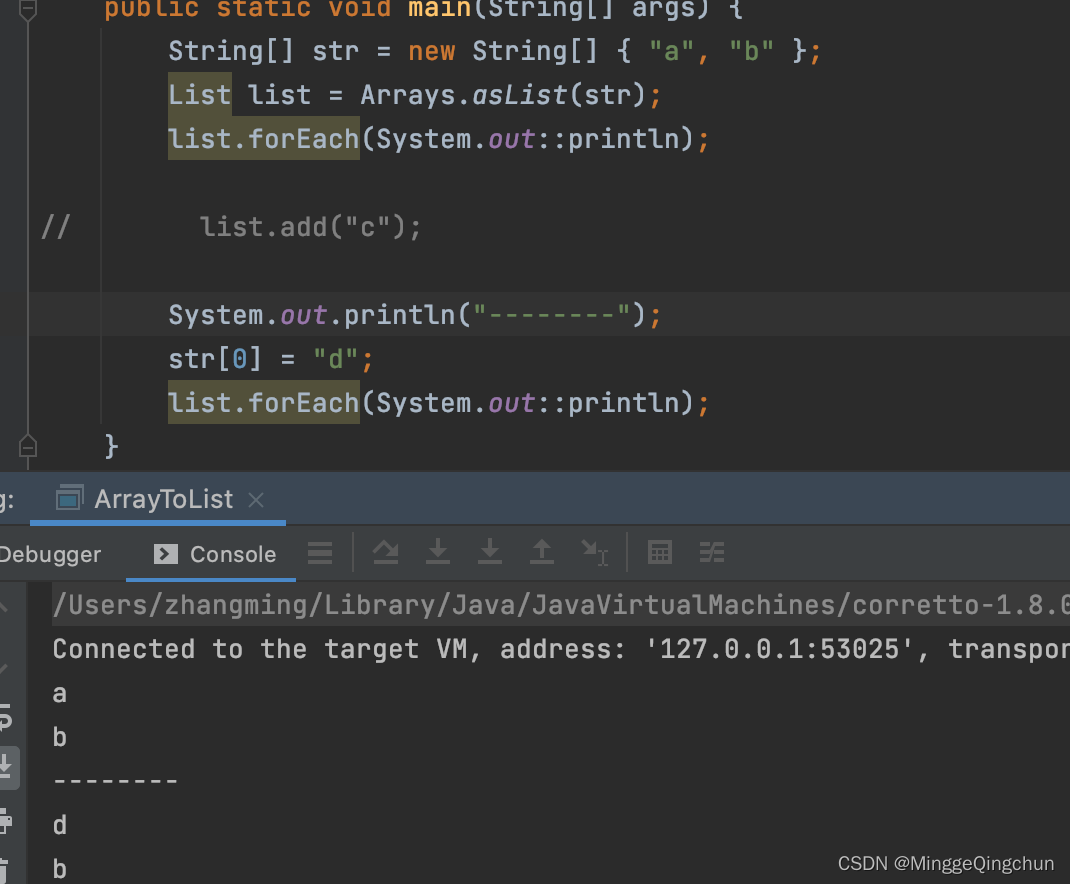
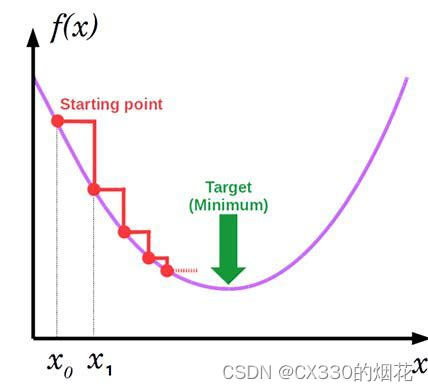
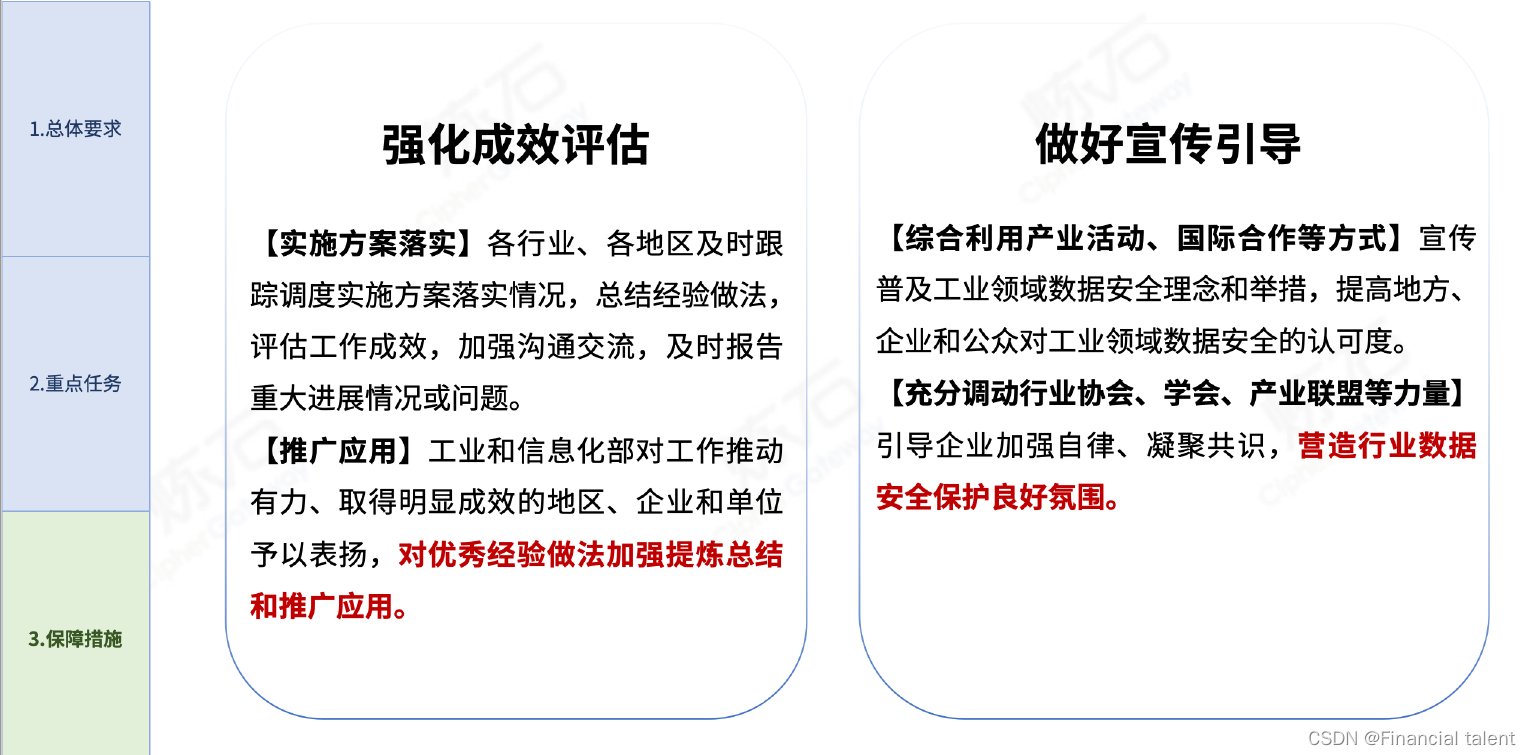
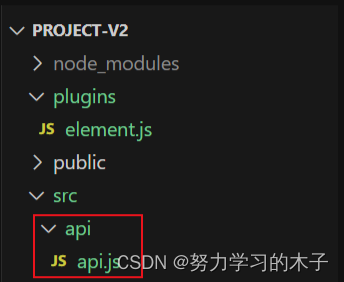
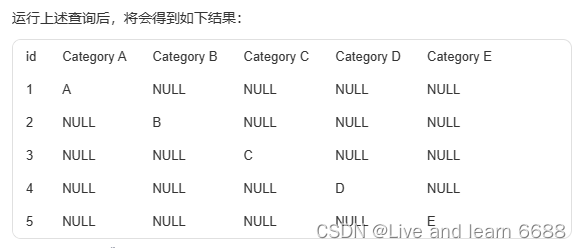

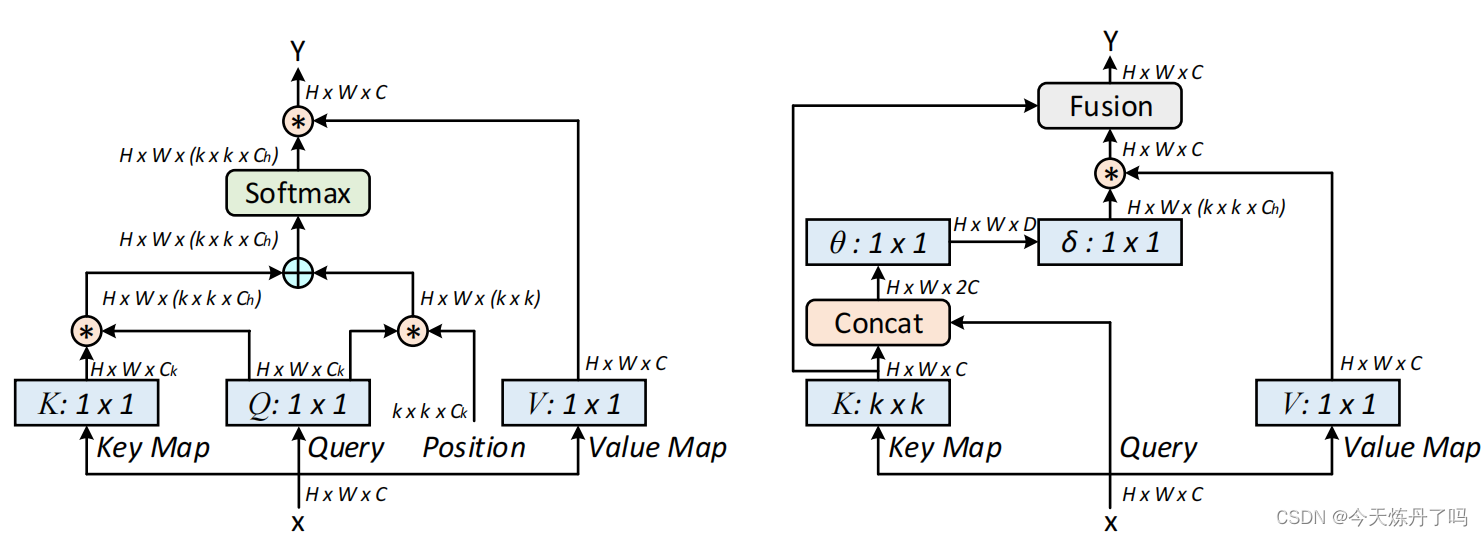
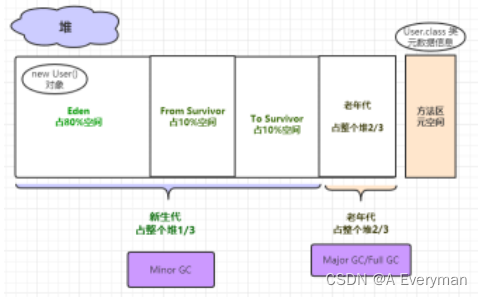



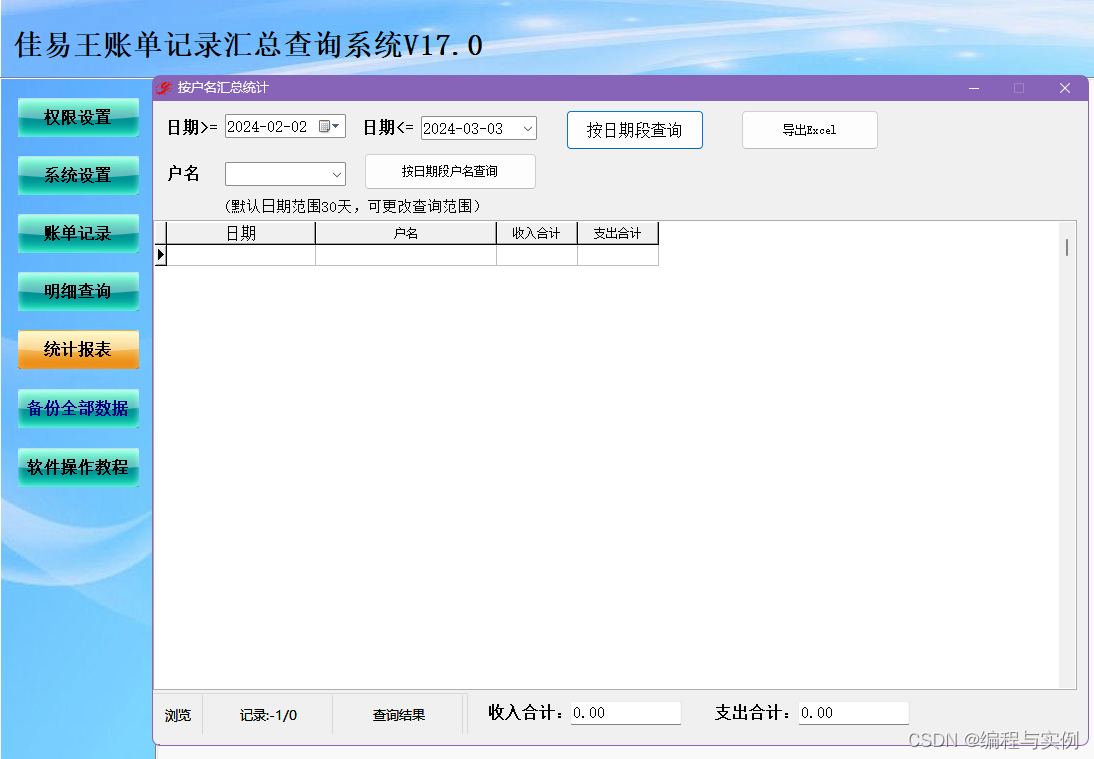




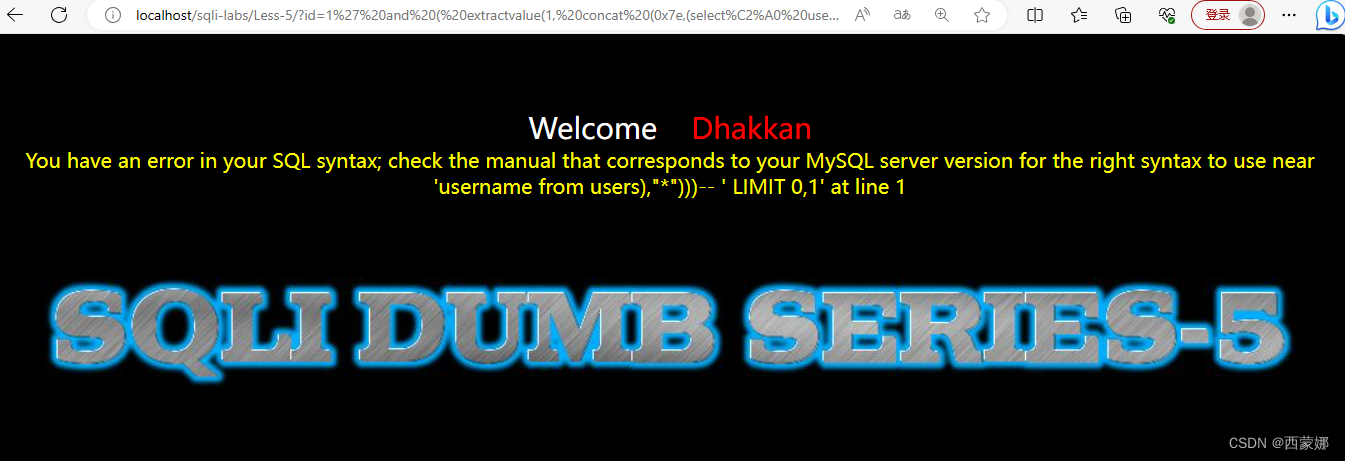

![[通用] iPad 用于 Windows 扩展屏解决方案 Moonlight + Sunshine + Easy Virtual Display](https://img-blog.csdnimg.cn/direct/2e0d41da05164192b2c59ceabf5afbcc.png)